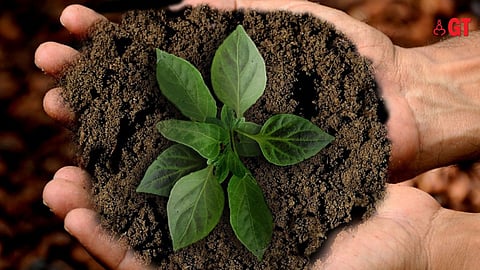

Important days, like World Environment Day, remind us of the concept of the 3R’s (Reduce, Reuse and Recycle), sustainable ways and eco-friendly alternatives. Many are constantly in the process of looking for activities that have a minimal effect on the environment, while at the same time create a healthy life.
In earlier times, people in Goa were involved in agriculture, fishing and various other occupations, which were directly connected with the environment. Their lives were also intertwined to nature. If you carefully observe the practices and traditions adopted by the people in the past, you will notice that they had deep sense and love for nature.
Here are some of the environment-friendly and sustainable ways that the people of Goa adopted in the olden days.
So much from a coconut tree
There is an abundance of coconut trees in Goa. The hinterlands and beaches are covered with coconut groves. These not only make Goa scenic and beautiful, but are of great importance to the locals population. While coconuts find use in the preparation of oil, food, or simply to serve as a refreshing drink during the hot summers, palm leaves too have plentiful uses.
Rather than just leaving the palm leaves unused, people would weave them into crisscross patterns and create ‘mollams’. The artistically weaved palm leaves would be used as mats for separating husk from rice. They would create a sort of fan, that was used to blow air, which would then help to blow away light impurities present in the rice.
Similarly, this woven 'sheet' would also be used to make 'raincoats'. This is one of the oldest practices, and these raincoats were sustainable and very easy to wear. The people would just wear them on the head, and the 'raincoat' would cover the wearer in the front as well as back.
Those who work for long hours, in the fields during the monsoons, would always be seen wearing these raincoats, made of palm leaves.
Also, coconut shells, called koti, were discarded after grating coconut, and was used for fire wood. People also burnt these in the evenings to drive away insects. These shells were also used as large ladles while cooking. The shell was attached to a length of finely shaved bamboo, and was used to stir semi-thick food items.
Floor and wall finishes made of dung
An ancient practice that was adopted by many people was that of smearing floors and walls of houses with cow dung. During the hot summers, the walls and ground would emit a lot of heat; at that point, cow dung was of great benefit.
It would help keep the floor and temperature of the house down. At the same time, insects would be kept at bay. And, that’s why you would find that many houses that would adopt this practice, here, in Goa.
Dry cow dung cakes were also burnt as fuel for cooking. Thus, cow dung had many uses in the home.
And, for the love of gardens
If you’ve have gone around Goa, or seen people's homes, you will notice that most of the houses were surrounded by stone boundaries.
And, in front of these houses were gardens with various flowers, pots and fruit bearing trees. Interestingly, people loved to adorn their houses with beautiful flowers and decorative pots. Fruit-bearing trees like guava, chikoo, love apples, custard apples, jamun, soursop, mangoes etc would give gardens a more appealing look, while at the same time, ensuring that they have sufficient fruits to enjoy during the season.
This practice of having gardens in their surroundings gave people a reason to grow plants, to begin with. The women of the household would spend hours decorating, cleaning and setting up their gardens. This practice encouraged people to care for plants, and grow more and more plants.
These old and traditional ways are no longer in vogue, and people are constantly searching for new and easily available forms of sustainable living, all the while forgetting how beneficial these olden-day practices can be. People in Goa had a different lifestyle when it came to food, living and work, and it helped them to stay fit and healthy.... and it was also in tune with nature.
Sadly nowadays, there is reckless deforestation, increasing waste and lack of garbage management. This World Environment Day, let’s take a look back at our old practices, and incorporate which could help benefit the nature in a large way.